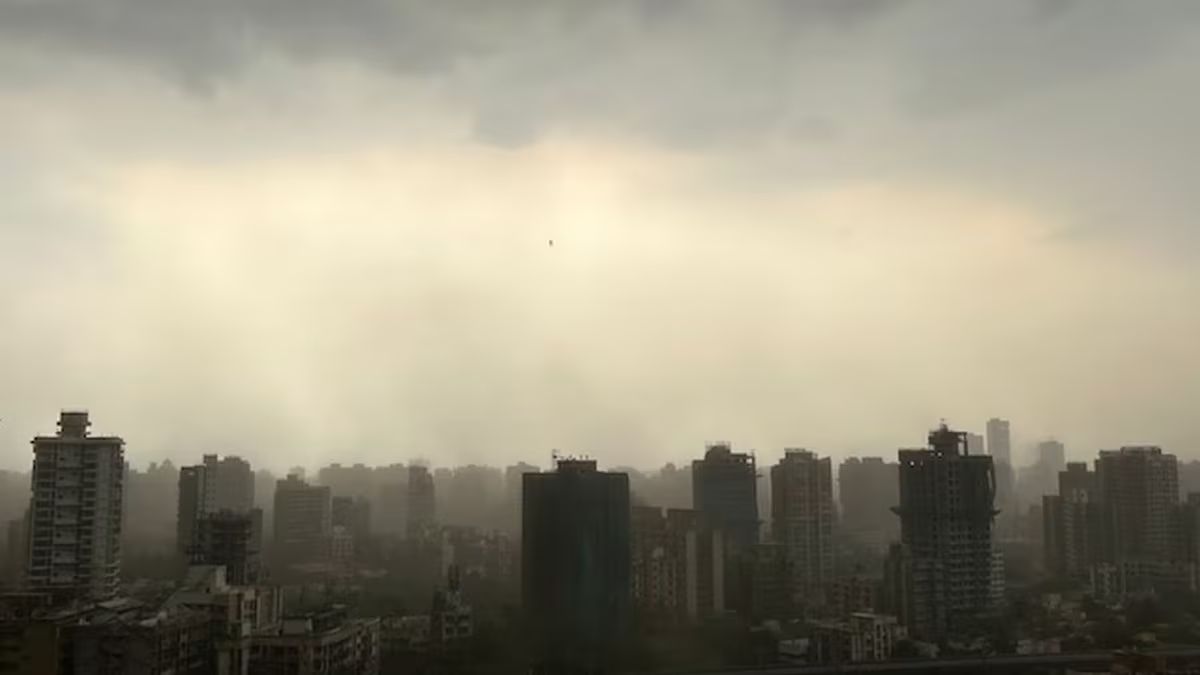West Asia Dust Storm Hits Mumbai’s Air Quality
Mumbai’s air quality has taken a significant hit in recent days due to the combined effects of local pollution, winter moisture, and a dust storm blowing in from West Asia. The ongoing haze and reduced visibility, which have affected the city’s air quality, are being largely attributed to dust particles from storms originating in Iran, Afghanistan, and Pakistan. This phenomenon is not new, as similar dust storms have aggravated Mumbai’s pollution levels multiple times in the past, including three instances in early 2022.
On December 27, 2023, Mumbai recorded an overall Air Quality Index (AQI) of 302 at Navy Nagar, Colaba, indicating a “very poor” air quality in the morning, which gradually improved to a “poor” rating of 265 by afternoon. Other locations across the city and Mumbai Metropolitan Region (MMR) such as Borivli East (207), Mazagaon (207), and Malad West (265) also recorded high AQI values, highlighting the pervasive pollution. The Maharashtra Pollution Control Board’s (MPCB) station in Ulhasnagar reported an AQI of 303, indicating a “very poor” air quality, while Saturday and Sunday brought similar reports of poor air quality across several localities.
The Dust Storm and Its Impact on Mumbai
According to Dr Gufran Beig, chair-professor at the National Institute of Advanced Sciences (NIAS), the dust storms originating from the Iran-Afghanistan-Pakistan border areas are making their way towards the Arabian Sea, contributing to the deterioration in Mumbai’s air quality. These storms, although relatively minor in their particulate contribution to the city’s pollution, are being amplified by the region’s winter weather conditions. While this dust intrusion is not significant enough to cause immediate health threats, its presence in the upper sky is more visible, and it contributes to hazy conditions.
Climatologist Rajesh Kapadia of the private weather blog Vagaries of the Weather explained that the current dust storm, which started around December 20 over Iraq, is being drawn into Mumbai’s air circulation by a powerful anticyclone in the Arabian Peninsula. This anticyclone has created conditions for the dust to be drawn from Gujarat and Maharashtra into the coastal areas. Normally, the sea breeze would disperse such pollutants; however, the lack of a sea breeze during winter has trapped these dust particles in the lower atmosphere, causing the visible haze and air quality deterioration.
Factors Aggravating Mumbai’s Air Pollution
While the dust storm from West Asia is contributing to the haze, Mumbai’s air quality has also been severely affected by local sources of pollution. The construction dust, vehicular emissions, and waste burning in various parts of the city remain significant factors in the current air quality crisis. The city is also grappling with localised pollution and the high moisture content in the air, which exacerbates the situation further.
Sunil Kamble, director of the India Meteorological Department (IMD) in Mumbai, pointed out that while the West Asia dust storm is not unusual, the persistent winter haze over the city is a concern. The IMD continues to monitor the weather and air quality, providing updates to local authorities, farmers, and defence agencies. However, with no sea breeze to clear the pollutants, the city’s residents continue to experience reduced visibility and breathing discomfort.
Outlook and Health Recommendations
Looking ahead, meteorologists suggest that the situation should improve in the coming days. Independent weather enthusiast Rushikesh Agre, better known as ‘Mumbai Rains’ on X (formerly Twitter), has indicated that AQI levels are expected to decrease by the weekend. He recommends that Mumbaikars take necessary precautions, including wearing masks, to mitigate the health impacts of the poor air quality, especially those with respiratory conditions.
As Mumbai’s air quality continues to deteriorate under the influence of both regional and local factors, experts emphasize the need for continued vigilance and timely public health measures. The city’s ability to manage air pollution will depend on both mitigating local sources and preparing for external environmental challenges like dust storms, which have become a recurring issue in recent years.




